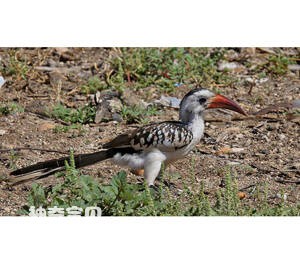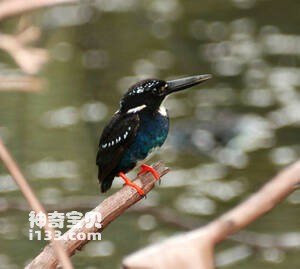
Tockus ruahae
Tockus ruahae,Tanzanian red-billed hornbill
The Tanzanian red-billed hornbill is known as Tockus ruahae and Tanzanian re···

Tockus rufirostris
Tockus rufirostris,Southern Red-billed Hornbill
The Southern Red-billed Hornbill is known as Tockus rufirostris or Southern ···

Tockus damarensis
Tockus damarensis,Damara Red-billed Hornbill
The Damara Red-billed Hornbill is known as Tockus damarensis or Damara red-b···

Tockus erythrorhynchus
Tockus erythrorhynchus,Red-billed Hornbill,Northern red-billed hornbill
Tockus erythrorhynchus, Red-billed hornbill, Northern red-billed hornbill, i···

Tockus nasutus
Tockus nasutus,African Grey Hornbill
The species is known as Tockus nasutus and African Grey Hornbill.Protect wil···

Tockus albocristatus
Tockus albocristatus,White-crested hornbill
The long-tailed curvebill is known as Tockus albocristatus and White-crested···

Ceratogymna brevis
Ceratogymna brevis,Silvery-cheeked Hornbill
The scientific name Ceratogymna brevis, foreign name Silvery-cheeked Hornbil···

Ceratogymna subcylindricus
Ceratogymna subcylindricus,Black-and-Whited-casqued Hornbill
The species is known as Ceratogymna subcylindricus and Black-and-Whited-casq···

Ceratogymna cylindricus
Ceratogymna cylindricus,Brown-cheeked Hornbill
Ceratogymna cylindricus, or Brown-cheeked Hornbill, is unknown.Protect wild ···

Bycanistes albotibialis
Bycanistes albotibialis,White-thighed Hornbill
Its scientific name is Bycanistes albotibialis, and its foreign name is Whit···

Bycanistes fistulator
Bycanistes fistulator,Piping Hornbill
The scientific name of the Hornbill is Bycanistes fistulator, and the foreig···

Bycanistes bucinator
Bycanistes bucinator,Trumpeter Hornbill
The scientific name of the Hornbill is Bycanistes bucinator, or Trumpeter Ho···

Bucorvus leadbeateri
Bucorvus leadbeateri,Southern ground hornbill
Bucorvus leadbeateri, Southern ground hornbill, is one of the most important···

Bucorvus abyssinicus
Bucorvus abyssinicus,Abyssinian Ground Hornbill
The northern Ground Hornbill is known as Bucorvus abyssinicus and Abyssinian···

Alcedo pusilla
Alcedo pusilla,Little Kingfisher
Alcedo pusilla, Little Kingfisher, has nine subspecies.Small kingfishers are···

Ceyx websteri
Ceyx websteri,Alcedo websteri,Bismarck Kingfisher
Ceyx websteri, Alcedo websteri, and Bismarck Kingfisher are birds of the gen···

Ceyx azureus
Ceyx azureus,Azure Kingfisher
Azure Kingfisher, Ceyx azureus, has seven subspecies.Blue kingfishers often ···

Ceyx flumenicola
Ceyx flumenicola,Northern silvery kingfisher
The Northern silver kingfisher is known as Ceyx flumenicola and Northern sil···

Ceyx argentatus
Ceyx argentatus,Southern silvery kingfisher
The Southern silver kingfisher is known as Ceyx argentatus and Southern silv···

Alcedo cyanopecta
Alcedo cyanopecta,Dwarf River Kingfisher
Alcedo cyanopecta, Dwarf River Kingfisher, has 2 subspecies (1. cyanopectus ···

Ceyx mulcatus
Ceyx mulcatus,New Ireland dwarf kingfisher
The New Ireland dwarf kingfisher is known as Ceyx mulcatus and New Ireland d···
